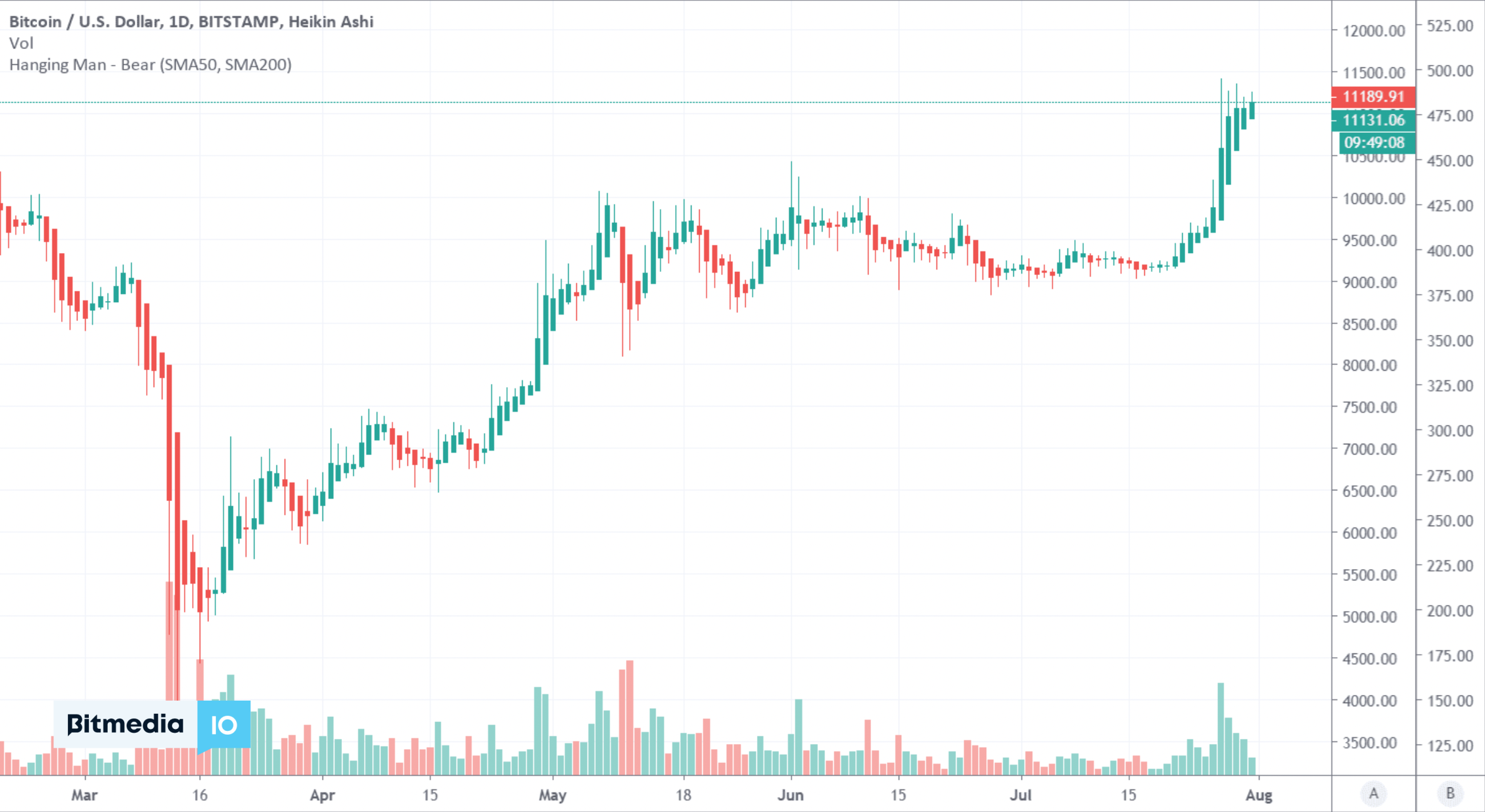Target Audience Analysis in the Crypto Market: Insights for Digital Marketers

The evolution of the digital consumer in the crypto space demands that marketers keep up with the latest trends and anticipate future shifts. While traditional marketing agencies offer valuable insights, the advent of digital marketing technologies allows crypto marketers to gather and analyze critical data about their audience independently.
Starting with familiar platforms like social media, where interactions with the audience are frequent, provides a solid foundation. From there, marketers can expand their strategies to cover unknown aspects, gathering both known and new data to engage their audience effectively.
Here’s why audience analysis is important in the crypto market: It offers cost-saving advantages, a competitive edge, and the ability to deliver highly relevant content to potential investors and users.
What is Audience Analysis?
In the crypto market, audience analysis involves researching and understanding various metrics such as demographics, language, location, preferences, interests, and behaviors of potential crypto investors or users. This analysis then creates detailed buyer personas, offering actionable insights that guide marketing strategies.
Gone are the days when such in-depth analysis was labor-intensive. Today, digital consumers in the crypto space readily share valuable information across digital channels, from interacting with brands to posting reviews and generating content.
Digital and social media analytics tools have revolutionized the speed and efficiency of data collection, making it easier than ever to understand your audience and monitor competitors’ performance.
Insights Provided by Audience Analysis:
- Demographics: Identifying the age, location, income, and occupation of potential crypto investors or users.
- Psychographics: Understanding the values, interests, and lifestyles that motivate your audience.
- Behaviors: Analyzing purchasing habits and preferences related to crypto products or services.
- Channels: Determining where your audience spends their time online and their preferred platforms for engagement.
- Competitive Analysis: Assessing how your audience interacts with competitors and identifying opportunities for differentiation.
- Pain Points: Pinpointing the challenges or needs your audience faces and how your crypto offering addresses them.
- Customer Satisfaction: Gauging customers’ satisfaction levels to improve and adapt your offerings.
- Messaging: Crafting messages that resonate with your audience’s preferences and values.
- Brand Perception: Understanding how your brand is perceived within the crypto community and aligning it with audience expectations.
- Customer Journey: Mapping out the customer journey from awareness to retention, focusing on crucial touchpoints for engagement.
The Significance of Audience Analysis in Marketing Strategies
Despite the debate over the exact framework, the essence remains unchanged: the buyer’s journey consists of distinct stages, each requiring a nuanced understanding of your audience.
Here’s a breakdown of why audience analysis is indispensable across these stages:
- Awareness: To create brand visibility and draw attention, you need to know where your potential customers will most likely see your message.
- Interest: Capturing your audience’s curiosity requires content that speaks directly to their interests and needs.
- Consideration: Providing targeted information and addressing specific concerns helps guide potential customers through their evaluation process.
- Conversion: Converting prospects into customers demands a deep understanding of their decision-making triggers.
- Retention: Keeping customers engaged and satisfied relies on personalized experiences that resonate with their expectations.
- Advocacy: Encouraging brand advocacy involves recognizing and leveraging the voices of your most satisfied customers.
Understanding your audience’s preferences, behaviors, and pain points allows for creating content that is relevant and timed perfectly to match each stage of their journey. This level of insight is achieved through thorough audience analysis, leveraging the wealth of data consumers willingly share.
Benefits of Investing in Audience Analysis:
Enhanced Efficiency and ROI
In an era where marketing campaigns are increasingly personalized and scaled-down, understanding your audience is crucial for maintaining effectiveness without inflating costs. McKinsey’s research indicates that leveraging technology to enhance customer experience can lead to a 20-40% cost reduction. Moreover, automation in marketing, offering a significant return on investment, underscores the value of aligning campaign content with audience insights to optimize the customer journey.
Time and Cost Savings
The more you understand your target audience, the more efficiently you can reach them. This saves time and resources and significantly boosts revenue and retention rates by up to 30% as campaigns become more targeted and relevant.
Strategic Advantages
Audience analysis provides a competitive edge, allowing marketers to tailor their strategies based on real insights rather than assumptions. This strategic alignment ensures that every piece of content, every campaign, and every communication is crafted with the audience’s specific needs and preferences in mind, maximizing the impact of marketing efforts.
Investing in audience research pays dividends in reduced costs, increased ROI, and a stronger, more meaningful connection with your customers.
Gaining a Competitive Edge through Audience Analysis
Generic advertising and imprecise social media targeting can significantly increase lead generation and conversion rates. Moreover, such approaches provide an opening for competitors to capture the very customers you fail to engage. Given the finite nature of every audience, honing in on those most likely to be captivated by your brand’s offerings is crucial.
McKinsey highlights that personalization can enhance customer satisfaction by 20% and increase conversion rates by 10-15%. Findings from Message Gears reveal that two-thirds of consumers are more inclined to patronize brands that deliver personalized experiences, viewing it as a marker of a brand’s commitment to understanding their needs.
Identifying your ideal audience and crafting personalized experiences are key steps in attracting individuals who will interact with your content and brand and boost your conversion rates.
Bridging the Marketing Perception Gap
A persistent challenge in marketing is the discrepancy between marketers’ perceptions of their efforts and customers’ reactions to those same initiatives. The Marketo Engagement Gap report sheds light on this issue:
- 61% of marketers believe they are providing the right content.
- 56% of consumers feel businesses need a deeper understanding of their needs.
- 51% of consumers think brands frequently send irrelevant content.
This data suggests a dual perspective: on the one hand, marketers are missing the mark in effectively engaging their customers; on the other, there exists a substantial opportunity for businesses willing to invest in truly understanding their audience.
Achieving this requires an in-depth knowledge of your audience. You must understand factors such as their familiarity with your brand, their position in the buying cycle, and their motivations. Gathering this information necessitates using diverse tools across all levels of your marketing funnel.
Differences between Known and Unknown audiences
This differentiation not only aids in optimizing your targeting efforts but also helps with data collection, cost reduction, and efficiency improvement. Let’s delve into what sets these two types of audiences apart and how recognizing this difference can benefit your marketing approach.
Known Audiences
Known audiences consist of individuals with whom your brand has already established some form of direct interaction. This interaction could vary widely, from a website visit where they utilized a free tool to signing up for your newsletter, or even making a purchase. Essentially, any engagement that results in you obtaining a unique identifier for the individual—such as an email address—falls into this category. This identifier is invaluable for several reasons:
- Remarketing: Known audiences are prime targets for remarketing campaigns. Since these individuals have already shown interest in your brand, tailored ads can nudge them further down the funnel, increasing the likelihood of conversion.
- Personalization: Having specific data about an individual allows for highly personalized marketing efforts. This could range from customized emails to targeted special offers, significantly enhancing the customer experience.
- Feedback and Improvement: Interactions with known audiences provide direct feedback channels. You can gather insights on their preferences, behaviors, and pain points, which can inform product development and marketing strategies.
Unknown Audiences
In contrast, unknown audiences are those with whom your brand has had no direct interaction. These potential customers have not yet provided any personal information or engaged in a way that allows you to identify them individually. Targeting unknown audiences presents unique challenges but also opportunities:
- Awareness and Discovery: For unknown audiences, the primary goal is to create brand awareness and facilitate discovery. This involves leveraging broader marketing channels and strategies, such as content marketing, SEO, and social media advertising, to reach potential customers interested in your offer.
- Engagement Strategies: Engaging unknown audiences requires compelling content and offers designed to encourage interaction. The aim is to transition these individuals from unknown to known status by capturing their information through sign-ups, downloads, or purchases.
- Segmentation and Analysis: While you may not have direct identifiers for unknown audiences, you can still segment these groups based on demographic, psychographic, and behavioral data inferred from their interactions with your digital properties. This segmentation can help tailor your approach to make it more relevant and appealing.
Traditional marketing wisdom suggests that acquiring and converting new leads is approximately ten times more expensive than engaging with individuals already in your CRM (Customer Relationship Management) system. Operating at the lower end of the marketing funnel, where potential customers are closer to conversion, is cost-effective compared to focusing efforts on the top of the funnel, where the primary goal is brand awareness and follower acquisition.
This approach is logical: customers at the bottom of your funnel have already shown interest in cryptocurrency, having navigated through the funnel’s stages or directly entered at a point closer to conversion. However, the constant evolution of technology, marketing tools, and the cryptocurrency market itself introduces complexities.
Improving on Convention in the Crypto Space
Focusing only on the bottom of the funnel in the saturated cryptocurrency market may not suffice. The experience offered to potential customers at the top of the funnel can significantly impact your marketing success. This is why strategies like influencer marketing and leveraging user-generated content have become invaluable, particularly in a field where community trust and credibility are paramount.
Top-of-funnel marketing efforts in the crypto industry can be costly, primarily because businesses cast a broad net. While this approach aims to capture the right audience, it often results in wasted resources on individuals for whom the content is irrelevant. The crypto market’s fast-paced nature demands precise targeting and content that resonates with a well-defined audience.
Where to gather the necessary information for audience research:
1. Social Media Insights
Platforms like Facebook, Instagram, LinkedIn, and Twitter offer detailed analytics about the people who interact with your posts. These insights can include demographic information, interests, and behaviors that can help you identify patterns and preferences within your audience.
2. Google Analytics
Google Analytics is a powerful tool for understanding the behavior of visitors to your website. It can provide data on user demographics, how users found your site, which pages they visited, and how long they stayed. This information is invaluable for identifying what content resonates with your audience and where there might be gaps in your funnel.
3. SEO and Keyword Research Tools
Tools like SEMrush, Ahrefs, and Moz can provide insights into what your target audience is searching for online. By understanding the keywords and questions that lead people to your site (or your competitors’), you can tailor your content to meet their needs more effectively.
4. Customer Surveys and Feedback
Directly asking your audience what they want is one of the most straightforward audience research methods. Tools like SurveyMonkey or Google Forms can help you gather this information. Additionally, monitoring feedback on social media and review sites can provide unfiltered insights into your audience’s preferences and pain points.
5. CRM Data
Your CRM tool is a treasure trove of information about your known audience. Analyzing this data can help you understand the characteristics and behaviors of your current customers, which can inform how you target similar unknown audiences.
6. Market Research Platforms
Platforms like Nielsen and Kantar provide comprehensive market research and consumer trend data that can help you understand the broader landscape in which your target audience operates.
7. Competitor Analysis
Observing your competitors and their audience interactions can provide insights into what works (and what doesn’t) within your niche. Tools like BuzzSumo can help you see what content is performing well for your competitors.
8. Third-Party Data Providers
For a fee, companies like Experian or Acxiom can provide detailed demographic, behavioral, and psychographic data on a wide range of audiences. This can be particularly useful for filling in the gaps in your own data collection.
9. Industry Reports and Publications
Staying informed about your industry through reports, publications, and news sources can provide context for your audience research, helping you understand macro trends that might affect your target audience’s behavior and preferences.
10. Engagement Analysis Tools
Tools like Hotjar or Crazy Egg can show you how users interact with your website, providing visual data on what catches their attention, where they spend the most time, and where you might be losing their interest.
How target audience analysis benefits your marketing strategy
1. Significant Reduction in Targeting Costs
Effective audience analysis has been shown to drastically lower crypto advertising costs. Know your audience’s demographics, interests, and behaviors, and create more targeted campaigns that reduce wasted spending, saving time and money.
2. Enhanced ROI Through Improved Conversion Rates
With a deeper insight into your audience’s affinities and behaviors, you can target the right people at the right time, increasing your website relevance score. This targeted approach leads to higher conversion rates and an improved return on investment.
3. Confidence in Influencer Marketing
Audience analysis enables you to identify your audience and the influencers they trust. This knowledge allows you to partner with the right influencers, extending your brand’s reach and credibility.
4. Informed Content Strategy
Understanding where your audience is in their customer journey is crucial. Audience analysis helps you differentiate between those ready to purchase and those requiring more brand awareness. This insight allows you to tailor your content strategy, improve your organic reach, enhance SEO, and reduce costs.
5. Boosted Loyalty and Retention
Knowing your audience better, you can connect with them more authentically and personally. In a world where customer loyalty is gold, speaking to your audience in their language fosters trust, encouraging long-term loyalty and retention.
6. Discovery of Niche Audience Segments
Your target audience might be broader than you think. Audience analysis can uncover niche segments you haven’t targeted yet, offering new opportunities for engagement and growth.
7. Competitive Advantage
In a crowded market, every advantage counts. Having a well-defined understanding of your audience through detailed personas gives you a competitive edge, enabling you to capture attention in a sea of competitors vying for the same audience.
Embracing quality, cross-platform target audience analysis is not just a strategic move—it’s necessary in today’s crypto marketing niche. With the insights gained from a comprehensive analysis, you can fine-tune your marketing efforts, ensuring that every dollar spent is an investment in connecting more meaningfully with your audience. The question isn’t whether you can afford to invest in audience analysis—it’s whether you can afford not to.

